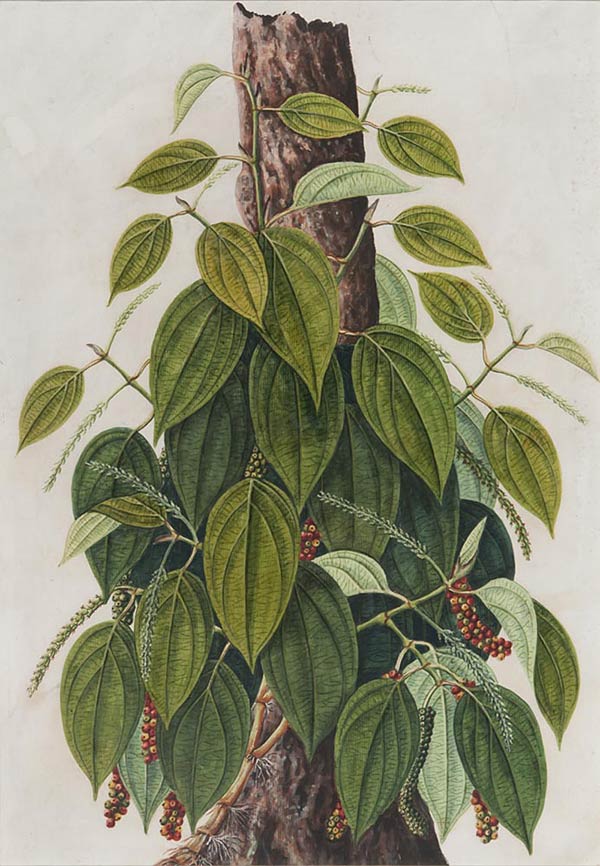Painting
Archive IndexPepper Plant
Attributed to Sita Ram
Flourished 1810 – 1822
- Circa 1820
Watercolour
46 x 32 cms
Early in his term of office, Hastings embarked on a 15-month tour of inspection
from Calcutta to Delhi, and Sita Ram was engaged to record the events. The
artist was busy throughout, from painting the magnificent fireworks display
put up in Hastings' honour in Lucknow to reproducing the Outab Minar in Delhi.
Between June 1814 and October 1815,he produced more than 230 large watercolours.
Sita Ram sketching a view of the Ganges despite being so prolific, what makes
his oeuvre significant is his mastery of the watercolour technique, never
a traditional Indian painting medium. Whether it was a view of the ruins of
Gaur in his native Bengal or a distant panorama of the Himalayas from Moradabad,
Sita Ram deftly captured the light and colour of the Indian landscape.
His drawings of monuments in their natural setting reveal his eye for architectural
detail and mark a departure from the cold, almost photographic way that Indian
monuments are seen in so many 'Company' paintings of his time.
All this makes his work a valuable record of the landscape of 19th-century
north India before environmental and urban pollution began to take their toll.
Some of the temples and ghats along the Ganges depicted by Sita Ram no longer
exist, others are in an abject state of neglect, like the tomb of Itimad-ud-Dawlah
in Agra. Sita Ram’s use of western techniques, make experts feel that he must
have studied European paintings and may have also worked as an assistant to
one of the English artists in Calcutta at the time, such as Sir Charles D'Oyly
or George Chinnery. But what remains unquestioned is his mastery of the medium.
Says art historian Pratapaditya Pal of the Los Angeles County Museum of Art:
"Sita Ram had gone farther than his British contemporaries and anticipated
the more illusionistic and impressionist renderings preferred by western artists
half a century later." And the artist's adoption of European technique, according
to Robert Skelton, former keeper of the Indian department at the Victoria
and Albert Museum, in no way implies that he lost touch with his Indian heritage.

